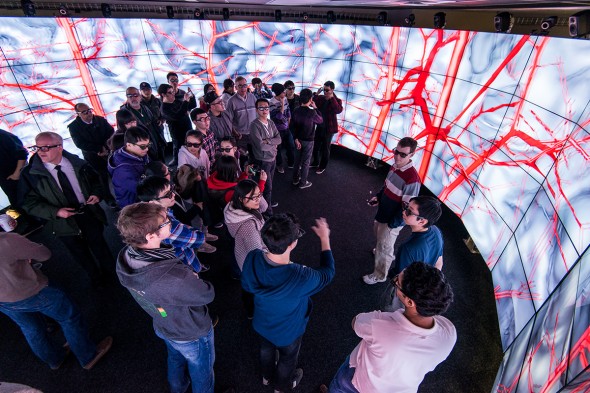EVL the ‘best’ of U.S. science

CAVE2’s 3-D brain model, developed by neurosurgeons, computer scientists and bioengineers, was highlighted in a National Science Foundation report to Congress. Photo: Lance Long/EVL
When you’re asking for money, it’s important to put your best foot forward.
When the National Science Foundation went to Congress this year to ask for $7.6 billion, the NSF put UIC’s best foot forward: a description of CAVE2, the large-scale virtual environment developed by the College of Engineering’s Electronic Visualization Laboratory.
Each year the NSF includes, in its budget request to Congress, about a dozen research “nuggets” that represent the best NSF-funded research, said Robert Sloan, professor and head of computer science.
Congress learned that CAVE2 was recently used by UIC neurosurgeons to display 3-D full-brain models. The models, which mirror the brains of individual patients, were developed by Andreas Linninger, professor of bioengineering.
Although painstaking work went into the development of the brain model, even the best computers could provide only limited spatial-resolution. The images were seamlessly displayed in the CAVE2 virtual environment.
This discovery could help change the way surgeons are trained and someday benefit hundreds of thousands of Americans who suffer brain aneurysms and strokes, the NSF said in its report.
“The entire EVL team, and especially professors Jason Leigh and Andy Johnson, and lead staff member Maxine Brown, are to be congratulated,” Sloan said.
